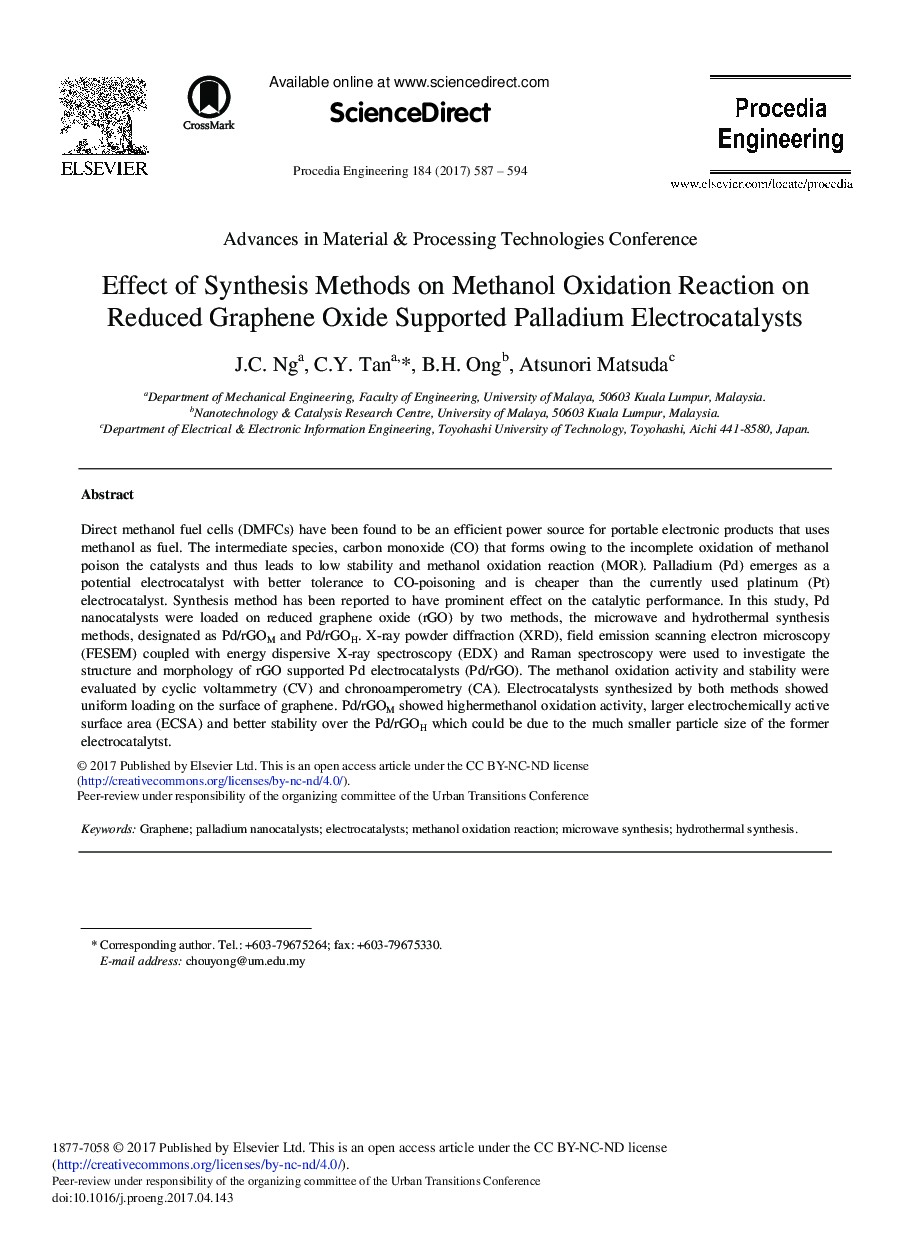| Article ID | Journal | Published Year | Pages | File Type |
|---|---|---|---|---|
| 5029169 | Procedia Engineering | 2017 | 8 Pages |
Abstract
Direct methanol fuel cells (DMFCs) have been found to be an efficient power source for portable electronic products that uses methanol as fuel. The intermediate species, carbon monoxide (CO) that forms owing to the incomplete oxidation of methanol poison the catalysts and thus leads to low stability and methanol oxidation reaction (MOR). Palladium (Pd) emerges as a potential electrocatalyst with better tolerance to CO-poisoning and is cheaper than the currently used platinum (Pt) electrocatalyst. Synthesis method has been reported to have prominent effect on the catalytic performance. In this study, Pd nanocatalysts were loaded on reduced graphene oxide (rGO) by two methods, the microwave and hydrothermal synthesis methods, designated as Pd/rGOM and Pd/rGOH. X-ray powder diffraction (XRD), field emission scanning electron microscopy (FESEM) coupled with energy dispersive X-ray spectroscopy (EDX) and Raman spectroscopy were used to investigate the structure and morphology of rGO supported Pd electrocatalysts (Pd/rGO). The methanol oxidation activity and stability were evaluated by cyclic voltammetry (CV) and chronoamperometry (CA). Electrocatalysts synthesized by both methods showed uniform loading on the surface of graphene. Pd/rGOM showed highermethanol oxidation activity, larger electrochemically active surface area (ECSA) and better stability over the Pd/rGOH which could be due to the much smaller particle size of the former electrocatalytst.
Keywords
Related Topics
Physical Sciences and Engineering
Engineering
Engineering (General)
Authors
J.C. Ng, C.Y. Tan, B.H. Ong, Atsunori Matsuda,
